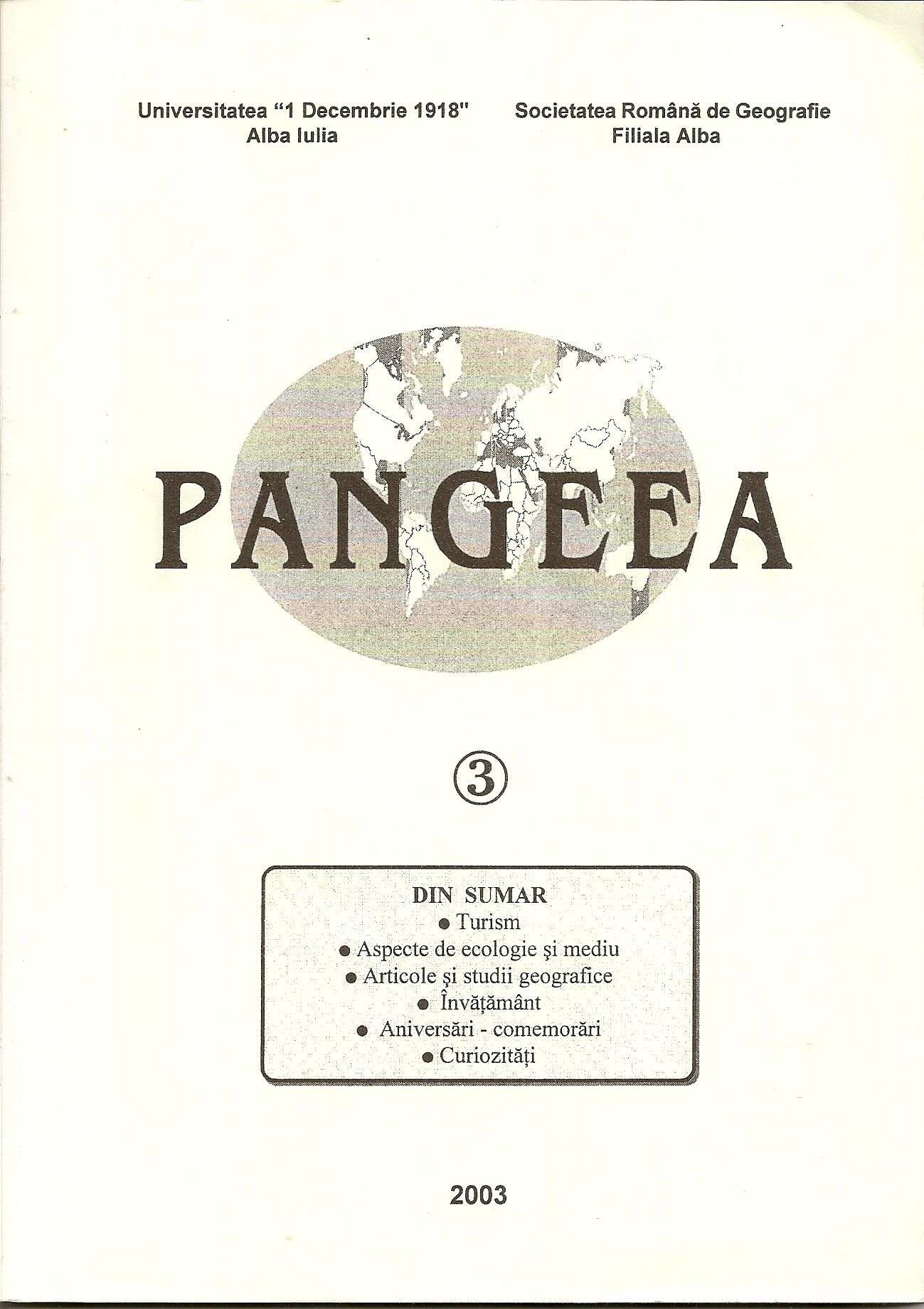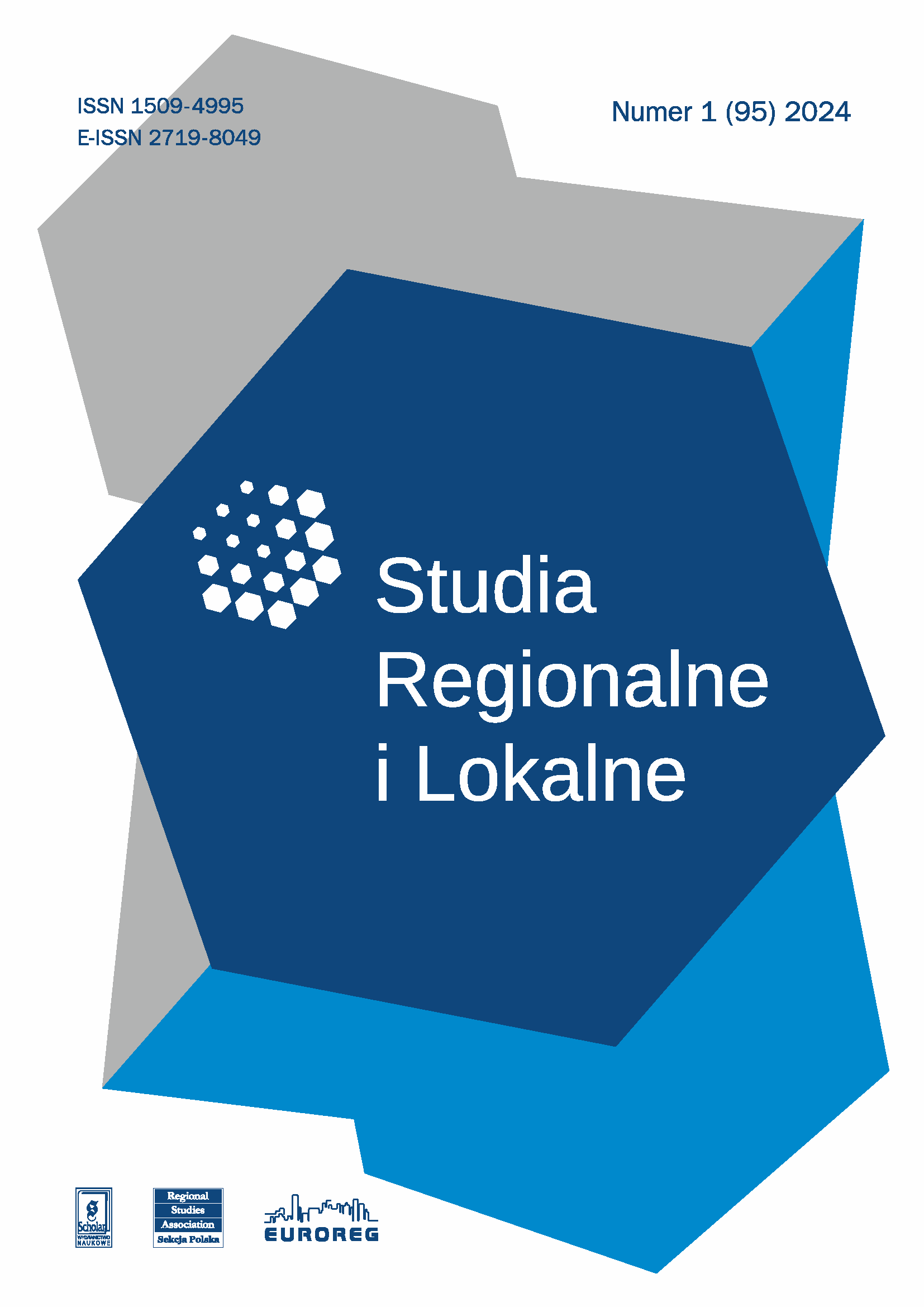
IMPACTUL RESURSELOR NATURALE ASUPRA DEZVOLTARII ACTIVITATII TURISTICE DIN ZONA MUNTILOR APUSENI
THE IMPACT OF THE NATURAL RESOURCES ON THE DEVELOPMENT OF TOURISM ACTIVITY IN APUSENI MUNTIES AREA
More...We kindly inform you that, as long as the subject affiliation of our 300.000+ articles is in progress, you might get unsufficient or no results on your third level or second level search. In this case, please broaden your search criteria.

THE IMPACT OF THE NATURAL RESOURCES ON THE DEVELOPMENT OF TOURISM ACTIVITY IN APUSENI MUNTIES AREA
More...

This research presents a comprehensive analysis of the production of terrain passability maps in southeastern Serbia, employing a multi-criteria decision-making (MCDM) analysis. The study integrates various geographical and infrastructural aspects, assigning coefficients to each input parameter, including rivers, roads, rails, CORINE Land Cover (CLC), soil, slope, and the Topographic Ruggedness Index (TRI). The introduction of the TRI marks an innovative advancement in terrain analysis and passability. By comparing wet and dry periods, the study provides critical insights into the dynamic nature of terrain passability, with implications for transportation planning and emergency response. The research's innovative approach and detailed examination set it apart, offering valuable contributions to scholarly comprehension and practical applications. The findings underscore the potential for interdisciplinary collaboration and the broad impact of geographic information systems (GIS) and terrain analysis in addressing real-world challenges. Future research may explore additional factors influencing terrain passability and expand the geographical scope of the study.
More...
Since the early 21st century, Global Positioning System (GPS) technology has dominated geodetic reference networks. Almost all countries established a permanent Global Navigation Satellite System (GNSS) station network to augment all available GNSS systems. By the end of 2005, Serbia completed the Active Geodetic Reference Network as a particular project of Serbia's Republic Geodetic Authority (RGA). Besides RGA, two private companies, Vekom and Geotaur, have established permanent station networks. This paper assesses the compliance of all the three networks, and network results are evaluated against the spatial distance determined by classical geodetic methods. When all available GNSS constellations are utilized, NAVSTAR, GLONASS, BEIDOU, and GALILEO, in the processing procedure, the established networks in Serbia align within a margin of about 3 mm across all coordinate axes. The results obtained within the research indicate that by using GNSS networks, it is possible to provide the coordinates of the points for the establishment of the national spatial reference system of Serbia, the reference system in almost all engineering fields, reference systems for the maintenance works of the real estate cadastre, and it is also possible to provide coordinates of points that can be used to define local, national, and world reference heights surfaces.
More...
Academic research indicates that total or current expenditures have been most commonly used in sub-central or local government’s efficiency analysis as dependent variables, and a proxy for the cost of service provision. Our research applied in the case of Polish districts for 2019 and 2020 indicates two important results: firstly, regardless of whether total or current expenditures have been used, the determinants indicate the same direction of impact, and, secondly, the COVID-19 pandemic did not change the direction of the impact. The regression results confirm the positive direction that the administrative, educational, protection, and safety variables have on dependent variables.
More...
Nowadays, the development of local communities is hindered by crises, external shocks, and disturbance. Under such circumstances, an important characteristic is their resilience, i.e. the ability to withstand negative external influences and ensure further growth. Border communities are particularly sensitive to external stresses stemming from geopolitical and economic changes. The article aims to identify key determinants and indicators of territorial community resilience in the EU-Ukraine cross-border area. The methodological foundations of the research comprise the main provision of economic theory, regional development, and spatial economy theory, etc. The methods of comparative, economic, and statistical analysis are used in the study of various dimensions of community resilience. The main results of the study of the peculiarities of socioeconomic development of Ukraine’s border communities and existing opportunities for the use of instruments of cross-border cooperation derive from a sociological survey based on the expert opinion method.
More...
The article presents the achievements of the “Diagnosis of the state of Poland’s spatial economy”, developed in 1981–1983, which critically analyses the effects of the thirty-year impact of the principles of building socialism on Poland’s spatial economy. These effects are related to the elements of the current state of the country’s spatial management, which leads to the conclusion that many of the unfavourable phenomena and processes of that time also occur today, after 30 years of market economy and the democratic system. The article ends with a proposal of research on the contemporary spatial conditions of the country’s development.
More...
The aim of the study is to examine how and at what stage in the evolution of the cohesion policy rural areas have been incorporated, thus gaining space for empowerment. The role of the territorial instrument, CLLD, will also be considered. The research problem was verified through a review of literature and EU legislative documents as well as empirical material from two evaluation projects. It was found out that the extension of the cohesion policy to include the objective of territorial cohesion was of particular importance for rural areas. In the 2014–2020 financial perspective, due to the territorialisation of cohesion policy – previously perceived as mainly urban – rural areas were considered for participation. CLLD has been proven to strengthen the sense of empowerment of local communities.
More...
This article aims to explore residents’ preferences and perceptions of the actual styles of local political leadership in Poland over the past decades. In particular, it analyses the size of the gap between preferred and perceived leadership styles. The paper uses a classification developed by Peter John and Alistair Cole distinguishing city boss, visionary, care-taker, and consensus facilitator styles. The primary empirical material comes from a nationwide survey of residents conducted in December 2022 and surveys in a few case study cities conducted in the spring and summer of 2023. In addition, previously published results from surveys conducted using similar methods are used. The results indicate a growing preference for consensus facilitator style, assuming an inclusive style for both policy preparation and policy implementation. The size of the ‘expectations gap’ is explained by the socio-demographic characteristics of the respondents (age, education) and the size of the city. Younger and better educated respondents have a particularly high expectation that mayors should involve different stakeholders in the preparation and implementation of local policies, while at the same time being more critical in assessing the actual behaviour of local authorities.
More...
The aim of the article is to present the communication by public transport of the towns located within the boundaries of the Municipal Functional Area of Słupsk–Ustka (MOF S–U) with the core cities (Słupsk and Ustka) and to indicate the areas where the phenomenon of transport exclusion may occur. The public transportation network in the area does not meet the needs directed by the residents to local authority decision-makers, which may limit their ability to get around, especially on weekends. During the study, the literature on the subject, documents at local and regional levels, and data contained in timetables were analysed as well as the GIS visualisations were used. Insufficient communication with public transport in the area results in limited transport accessibility and, consequently, may lead to transport exclusion.
More...
The suburban zone of Wroclaw is characterised by dynamic population changes and increased construction traffic. However, the pace of the changes taking place is not fully reflected in official population statistics, based on registration data, presenting a much lower population than actually resides in the suburban municipalities. The purpose of the article is to estimate the actual population of the Wroclaw suburban zone for data from 2012/13 and 2020, and to show the degree of the differentiation of the population transition taking place in individual reference units. The estimation of the population size was made on the basis of the author’s method, based on the aggregation and comparison of statistical data on registrations from the register of the General Electronic System of Population Registration (PESEL) and vector spatial data from the Database of Topographic Objects (BDOT10k). From 2012/13 to 2020, the population of suburban zone of Wrocław almost doubled compared to official statistics data. The highest level of the underestimation of the actual population was observed in villages located near main communication routes and in the closet vicinity to Wrocław city. Those are places where the suburbanistion processes were observed the earliest.
More...

Glossar: Terminologie europäischer Bildungs- und Berufsbildungspolitik SIGMA – Support for Improvement in Governance and Management Aktuelle wissenschaftliche Publikation: „Climate. Changes. Security. Navigating Climate Change and Security Challenges in the OSCE Region“. Schriftenreihe der Landesverteidigungsakademie
More...
High temperature and pronounced humidity. Incredibly aggressive mosquitoes. But an interesting journey. Nature, mountains (Sierra Maestra), beaches, Atlantic Ocean and Caribbean Sea, extremely diversified flora (especially for a botanist), crops stretched by sugarcane, banana trees, coffee, a communicative population in the beautiful Spanish language, very many attractive girls and women (of all the sizes and colors (white, mulatto, black), most of the buildings in a deplorable state (except for historical centres), ancient American and Russian cars, pure communist political regime, a lot of poverty, modest level of life,numerous restrictions, lack of freedom, acute feeling of Romania for a few decades ago, people does not express their opinions easily, but they are very cheerful, tasteless gastronomy, the national drink is the very tasty rum („vitamin” R) of exceptional quality (at least 20 varieties). I tried for two weeks to maintain the Romanian-Cuban friendship!
More...
This study presents the significant anthropogenic impact of recent years has imposed the need to protect nature at the local, regional and global level, therefore numerous laws have been promoted to protect the environment and various measures have been imposed. The aim of these measures is to preserve biodiversity at all levels. Protected areas are vital for biodiversity conservation, they represent the basis of all national and international conservation strategies, they contribute to maintaining the functioning of ecosystems, serve as refuges for species and maintain ecological processes that could not survive in intensively managed terrestrial or marine landscapes. Given the context we are going through, i.e. the decline of biodiversity at an alarming rate, we considered it opportune to analyze the fauna of the Buciaş Nature Reserve, Bacău County. The analysis consisted of the classification of fauna protected by the Bern Convention, in terms of IUCN categories and population trends. Considering the problematic situation of biodiversity globally, the results of the analysis are gratifying, 95% of the analyzed species are non-threatened species, 3% are almost threatened and only 1% are vulnerable species, otherwise Romania is one of the countries with a wide biodiversity and well preserved.
More...
The cruise in the Caribbean Sea, aboard the luxurious passenger ship COSTA PACIFICA, under the Italian flag, resumed after the Covid–19 pandemic, was particularly attractive and successful according to expectations. It included, during the trip, the visit of hispanofone Dominican Republic and anglofone Jamaica. The landscapes, the beaches with very fine sand and the very communicative and hospitable populations have marked numerous agreeable moments. The national drink, namely the renowned local rum varieties, could not be missing of course, maybe in competition with the Cuban one, in the opinion of the locals even tastier. Destinations worthy of being explored again with other tourist objectives still unknown.
More...
South Korea is at present a rich, technologically highly advanced and increasingly globalized Asian country. The capital is Seoul. Population 50,000,000 inhabitants. Varied geography, predominantly mountainous and forested, with a coastline of over 2,500 km on the Sea of Japan to the east and the Yellow Sea to the west. Millennial history and culture. Their traditional enemies and invaders are the Mongols,the Russians, the Chinese and the Japanese. Gastronomy specific to the Far East. Impressive developmental achievements in all fields (infra‑structure, constructions, IT, culture, art). The advanced living standard, incomparable to North Korea, with inhabitants poorly paid, hungry and deprived of any freedom. The national obsession is a continuous education! Incredible cleanliness everywhere, without a single trash can on the streets.
More...
Morocco’s remarkable naturalistic diversity consists of mountain landscapes, forests, grasslands, oases, seasonal rivers, deserts and beaches on the Mediterranean Sea and Atlantic Ocean. The temperature, cooler in the morning, reached around 20° C at noon, sometimes even more. The food is varied, especially beef and lamb, with boiled vegetables, sauces and condiments. Wine is produced locally and imported, alcoholic beverages are freely traded, but consumption in public spaces is usually restricted; the national drink is mint tee. The cultural footprint is due to the location between two continents and three cultures – Arab, African and European. The population is extremely hospitable. The French language facilitates personal contacts. The invitation to a traditional cold or warm mint tea is also common with foreigners, as in my case in 1974. All practiced hotels, of several stars, are comfortable, elegant and quiet; there are no rooms numbered 13, 113, 213 etc.! Services at hotels, restaurants, shops are polite and usually prompt (especially for the Arab world). Highly developed tourism. A country with a beautiful landscape, with an extremely hospitable population, worth visiting.
More...
gain in the USA, now on the West coast and Hawaii, after 32 years. An always interesting and novel trip in a huge, very diversified country, for us Romanians, at present still with a tourist visa (sic),often showing many new, sometimes unexpected aspects. At the same time, a country of contrasts, from multimillionaires and billionaires to hopeless homeless. The trip included visiting the cities of Los Angeles,Las Vegas, San Francisco and the state of Hawaii (namely the island of Oahu, with its capital Honolulu). The most beautiful – with an observable European look – appeared San Francisco (spoilt Frisco). Very high temperatures were endured almost everywhere, culminating in Las Vegas with a national record of 45o C, on July 7th. Aloha!, Hawaii, the 50th American state, in the Pacific Ocean, the most recently attached,and surely the most exotic one, mahalo!
More...